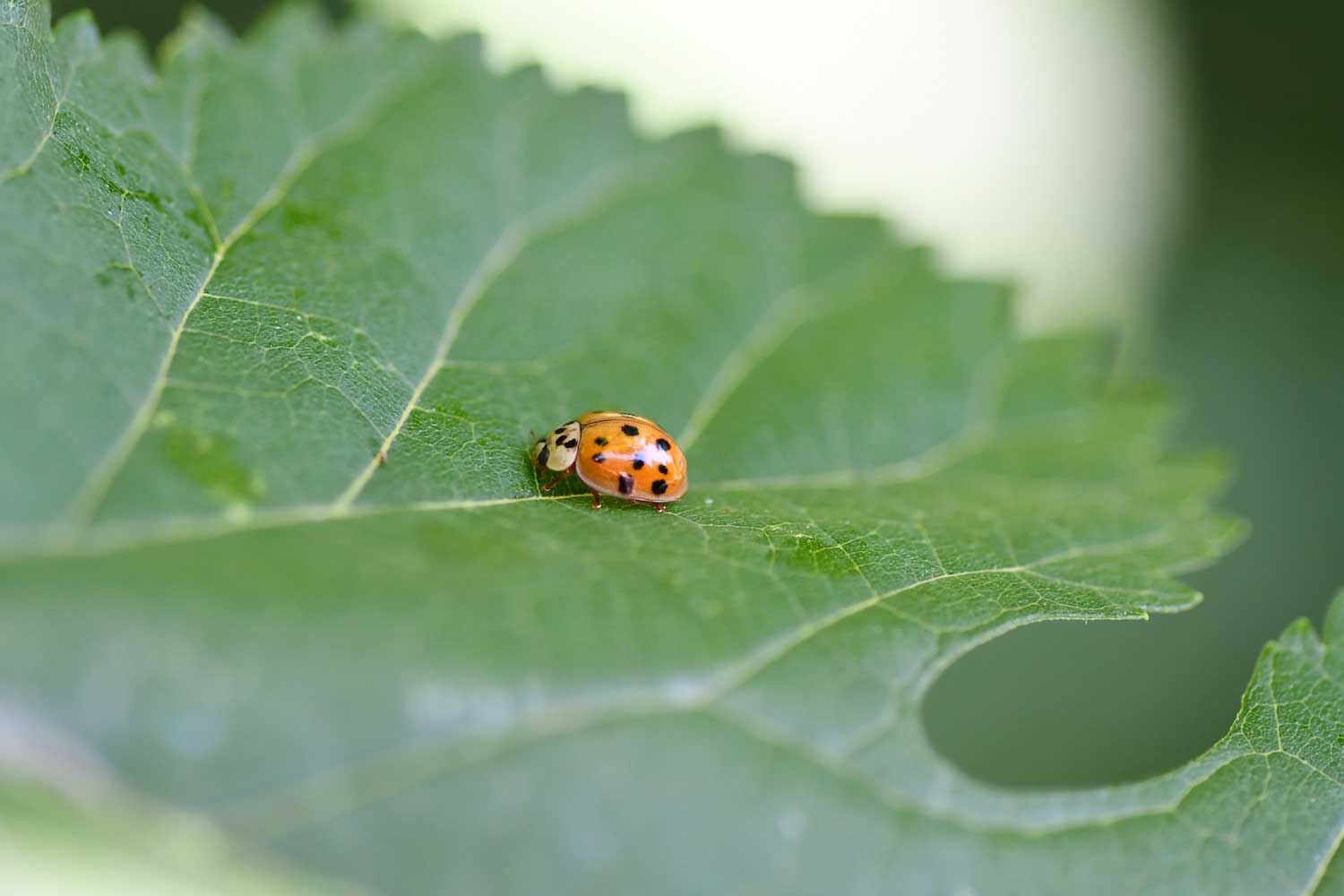Myth buster: Can you tell a ladybug's age by its spots? In a word, no

Have you heard that can you tell a ladybug's age by counting its spots? If so, you probably knew that sounded a little far-fetched, and you'd be right. But lots of myths and legends surround a ladybug's spots.
Many years ago, farmers believed the number of spots a ladybug had would tell them about the upcoming harvest, according to Wonderopolis. A ladybug with seven or fewer spots meant there was a great harvest ahead. More than seven spots meant a poor harvest. And in some cultures, people believe that a ladybug can tell you how many children you will have. As the legend goes, if a ladybug lands on you, its number of spots is equal to the number of children you will one day have.
In reality, a ladybug's spots can't tell us how old the insect is or anything about the future. What they can tell you, at least in some cases, is what species of ladybug you are seeing. The world is home to more than 5,000 species of ladybugs, so telling them apart can be tricky business. Some have common names that reflect their spots. Take the seven-spotted ladybug, one of the more common ladybugs in the United States, according to National Geographic. It has seven spots — three on each side and one in the middle.
In Illinois, we also commonly see the twelve-spotted ladybug, which is also known as the pink spotted lady beetle. Appropriately enough, these ladybugs have 12 spots in all, six on each side of its hard shell, which is called an elytra, according to the University of Illinois Extension.
However, there are plenty of ladybugs that aren't easily identified by their spots, or at the very least that might create confusion among species. Some ladybugs have no spots at all, and some may have stripes or other markings. Take the multicolored Asian lady beetle, which is perhaps the most common species and is the one we often see trying to make its way indoors in the fall. Their appearance is highly variable. Asian lady beetles are seen in a range of colors, and they can have no spots at all or many spots, although 16 or more spots is most common, according to the U.S. Department of Agriculture.
While a ladybug's spots don't tell us anything about the insect's age or the future, these insects' coloring does communicate to other animals. Most ladybugs are red or orangish-red, and that red coloring sends a signal that they taste bad, according to National Geographic. If their colorful warning isn't enough to keep predators away, they can also secrete a bad-tasting liquid from their joints, and they're also known to play dead.
Maybe you noticed that some of these spotted insects go by ladybug, while others are known as lady beetles. Beetle is really a more accurate term than ladybug, because they are all beetles, not bugs. Beetles and bugs are both orders of the insect class of animals, and there are differences between them.
No matter what you call them, ladybugs and lady beetles are beneficial insects. Most are predators, feeding on insects smaller than themselves, National Geographic reports. They eat a lot of aphids and other plant-eating insects that can damage and destroy crops.
Even the Asian lady beetle, which is today considered invasive in some areas, is beneficial. In fact, it was introduced in some parts of the United States in the early 1900s as a means of controlling some agricultural pests, the USDA reports.
